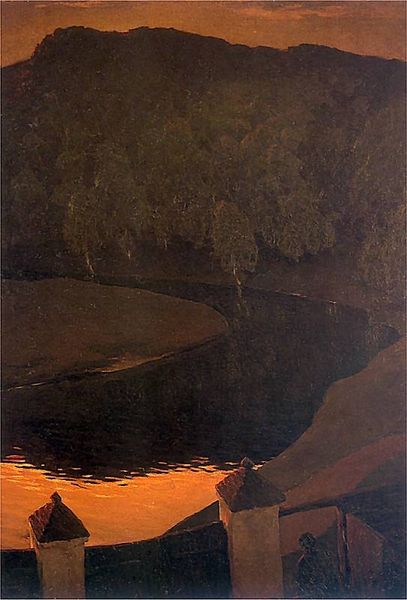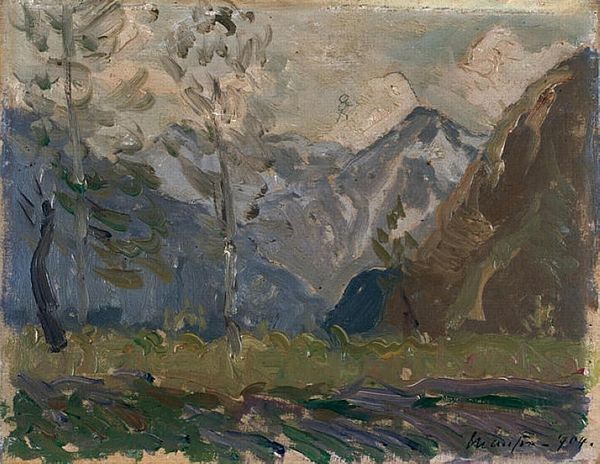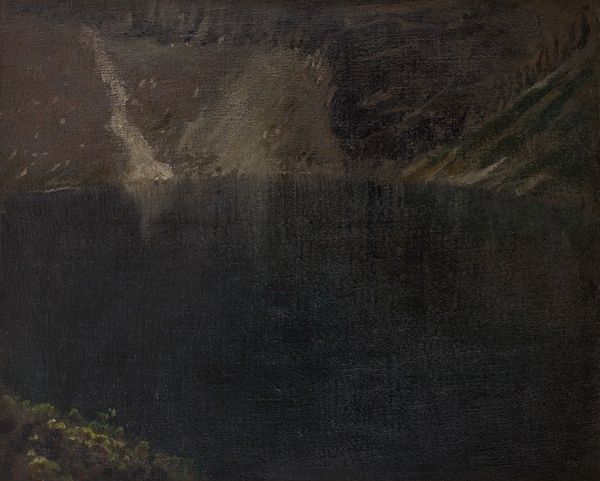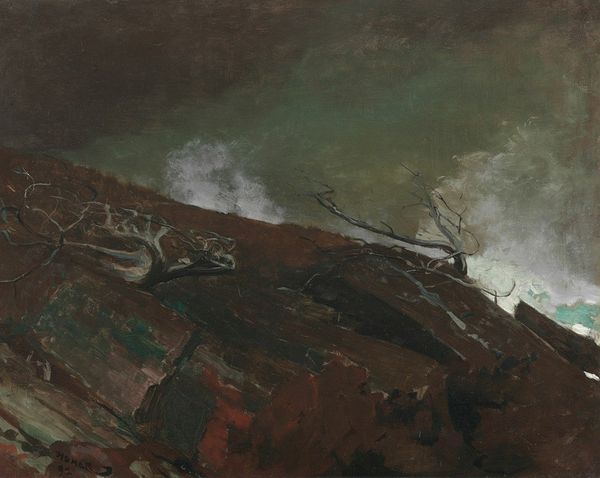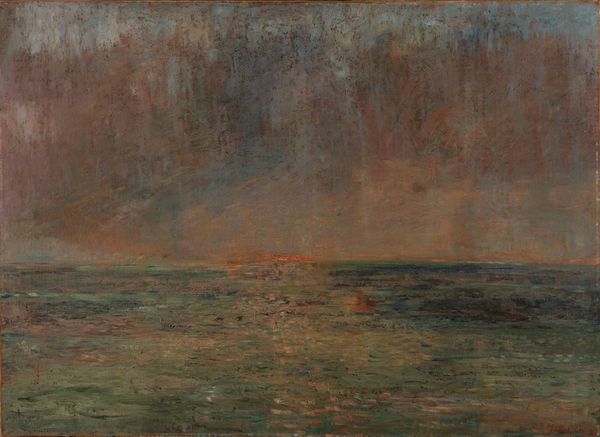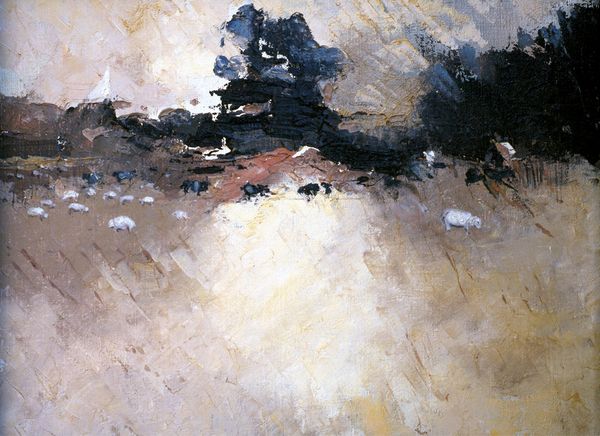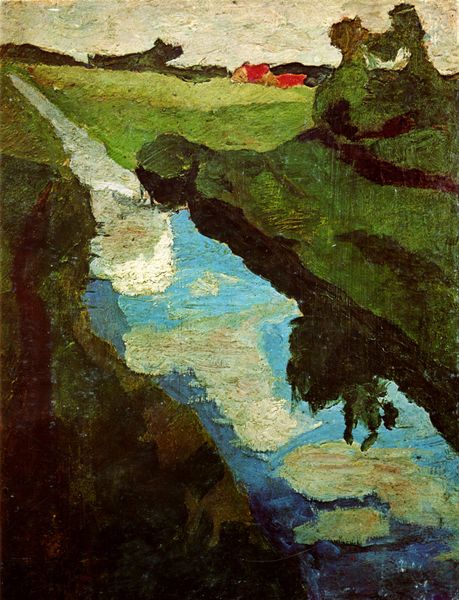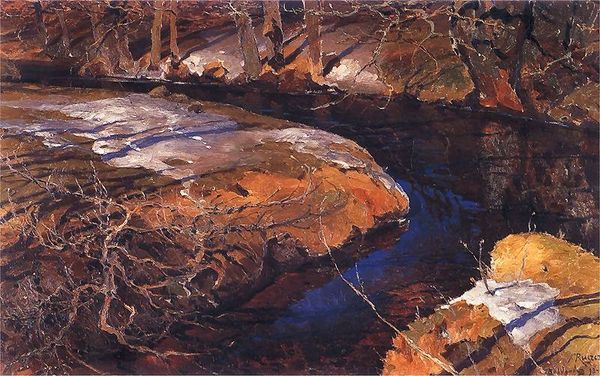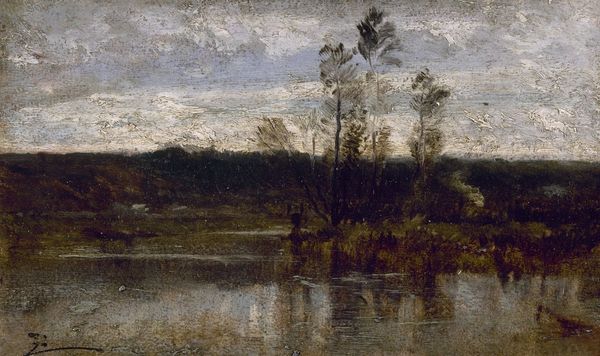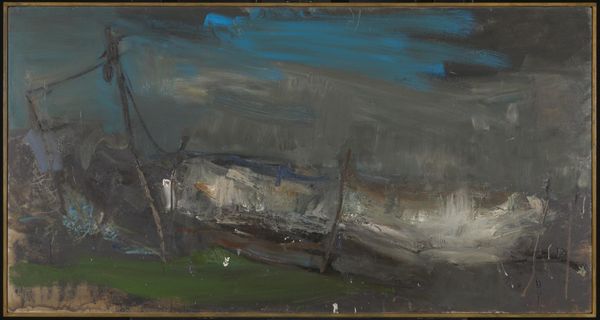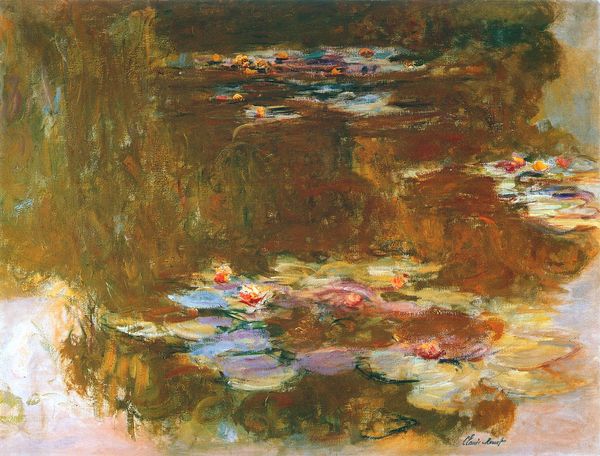
Copyright: Public domain
Editor: So this is Ferdynand Ruszczyc's "Forest Creek," painted around 1900 using oil paints. It's incredibly somber. I’m drawn to the stillness in it. What do you see in this piece? Curator: The water, especially, invites introspection. This period sees a rise in Symbolism. Can you feel that? Ruszczyc masterfully uses symbolic imagery: water often represents the unconscious, or the passage of time. Editor: I do. It almost feels…frozen, like a still mirror. Curator: Precisely! Notice how the stark contrast between the snow and the dark water evokes a sense of duality – the conscious versus the unconscious. Are you aware of any recurring themes, perhaps related to mortality, nature or man’s insignificance that occur to you when looking at this canvas? Editor: Yes! The lone tree, stark against the landscape, really emphasizes a feeling of solitude. And the brushstrokes add to the almost dreamlike feel. Curator: Ah, a sense of lonely strength? The tree may represent resilience but it is, as you state, visually isolated. These recurring symbols reflect the period’s fascination with inner experience. Ruszczyc paints an external world mirrored by his inner world. Does viewing a reflection on reality – versus reality – make you think of our lives today? Editor: It does! With social media blurring reality, perhaps? Curator: Precisely, just so. Do you notice that the forest creek in itself invites a psychological journey that transcends the purely aesthetic? Editor: I never thought about that. The painting initially seemed simple. But seeing the layers of symbolism makes it so much deeper. Curator: Indeed, and each brushstroke invites contemplation not only of its physical context but also of what images might emerge for generations to come. Editor: Thank you, I will certainly bring these symbols with me next time. Curator: So shall I!
Comments
No comments
Be the first to comment and join the conversation on the ultimate creative platform.
